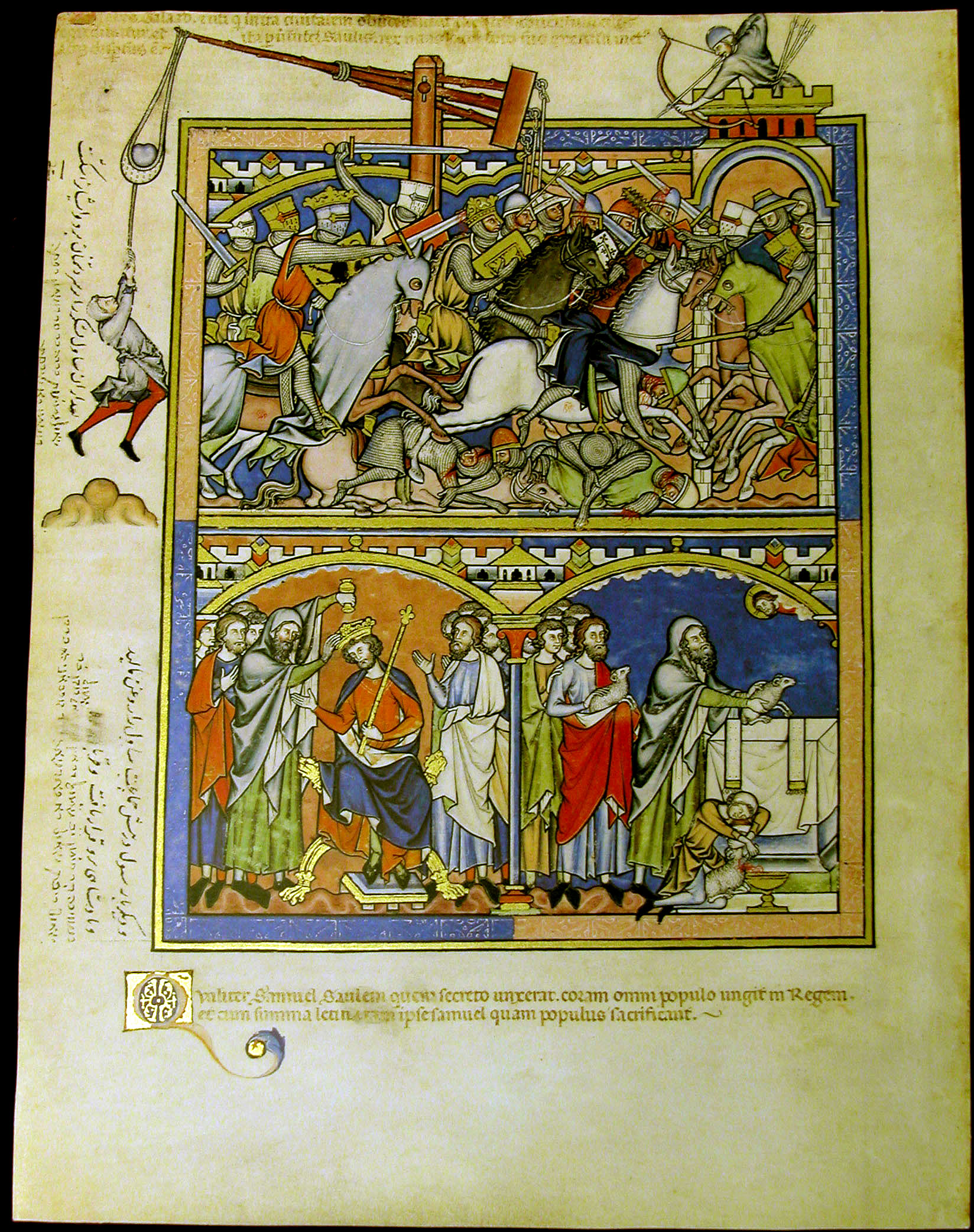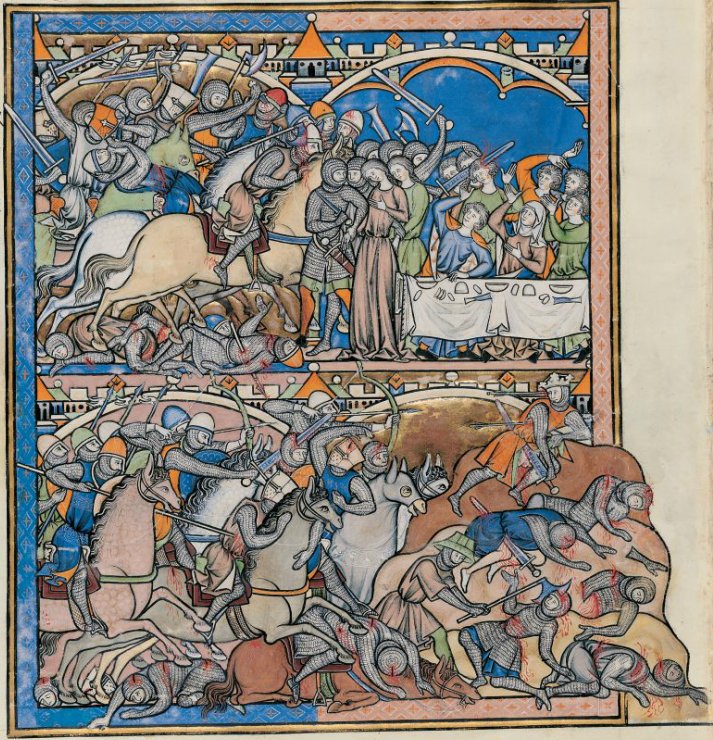One of the best sources for a good understanding of the ways lordship was enacted in the medieval period is to take a good look at manuscript illustrations. Historians have used the Morgan Bible, commissioned in the 1240s by Louis IX, to reconstruct the material culture of thirteenth-century France, but even more useful is the access the manuscript gives us to rituals of power in the period. The first image includes King’s Saul’s anointment as king of Israel. It is identical to the form that a thirteenth-century coronation ritual would take.
The Morgan Bible is useful as an exemplar of manuscript transmission. Below, one gets a clear look at the Latin biblical quotations at the top and bottom, as well as the Persian and Judeo-Persian inscriptions added during the manuscript’s seventeenth-century tenure at the court of Shah Abbas, King of Persia. This is even more remarkable when one realizes that the Bible originally had no text, each script was added later as the manuscript traveled.

It’s easy to tell right away that this is a royal manuscript. Red, blue, and green inks serve to correct or decorate texts of all kinds, but the palate range of this project and the detail of the depictions could only be funded by royal patrons. The image of Goliath below gives a stark depiction of thirteenth-century arms, and if you look closely, you can see the stone embedded in Goliath’s head!

Although recent work on the nobility of the High Middle Ages argues convincingly that aristocrats were far more literate than previously thought, one wonders if the Old Testament was chosen largely so the court could enjoy lavish illustrations of horrific violence. (Paul, 2013, 2006 Clanchy, 1978)
It is simple to identify characters in the Morgan Bible. King Saul is consistently drawn in orange and Jonathan is always dressed in grey while armed. David’s wardrobe changes consistently throughout, perhaps to emphasize his passage from shepherd boy to king in Israel. Below, he has adopted the clothes of a thirteenth century courtly youth and lord.

Good lords always take counsel from their friends, even if your friend happens to be the son of the man who consistently tries to kill you!
Below is an illustration of the Israelites’ final battle with the Amalekites. Usually only the Israelites wear the large great helms worn by higher-status men at arms. If one looks closely, the scribe has inscribed ‘IOYOUSE’ onto the sword of a Philistine. Song of Roland, anyone?
Jonathan Sapp
University of Notre Dame
Footnotes:
Nicholas Paul, To Follow in Their Footsteps: The Crusades and Family Memory in the High Middle Ages (Ithaca: Cornell University Press, 2013)
Michael T. Clanchy, From Memory to Written Record: England, 1066-1307, 3rd. edn. (Wiley-Blackwell, 2012)

